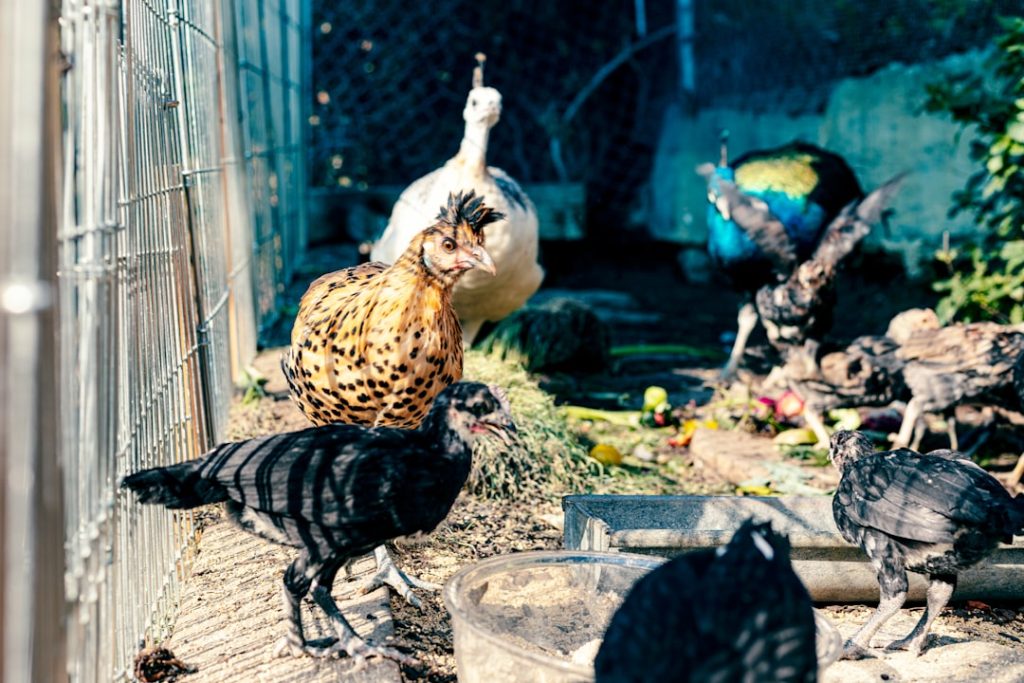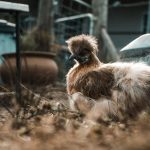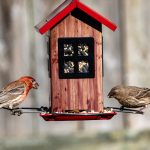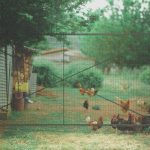Hawks are birds of prey renowned for their exceptional vision, powerful talons, and rapid hunting capabilities. As skilled predators, they primarily target small mammals and birds, posing a potential threat to backyard chicken flocks. Identifying hawks can be challenging due to the variety of species and sizes, but common types include the red-tailed hawk, Cooper’s hawk, and sharp-shinned hawk.
These birds are characterized by sharp beaks, broad wings, and long tails. Hawks are diurnal hunters, being most active during daylight hours, and often hunt from elevated perches before swooping down to capture their prey. Understanding hawk behavior is essential for protecting chickens from potential attacks.
Hawks are opportunistic predators that will exploit any easily accessible food source, making free-ranging chickens vulnerable to attack. They are known for their swift and silent strikes, often catching prey unaware. Hawks are also territorial, potentially viewing backyards as part of their hunting grounds.
It is important to recognize signs of hawk presence, such as frequent sightings in the area or sudden chicken disappearances. By comprehending the behavior and habits of hawks, proactive measures can be taken to safeguard flocks and prevent potential attacks.
Table of Contents
- 1 Creating a Secure Chicken Coop: Tips for Building a Hawk-Proof Enclosure
- 2 Implementing Deterrents: Scare Tactics and Visual Distractions
- 3 Utilizing Predator-Proof Netting: Protecting Your Chickens from Aerial Attacks
- 4 Providing Safe Roaming Areas: Designating Hawk-Free Zones for Your Flock
- 5 Establishing a Hawk Watch: Monitoring and Responding to Potential Threats
- 6 Seeking Professional Help: Consulting with Wildlife Experts for Additional Support
- 7 FAQs
Key Takeaways
- Hawks are a threat to chickens and can exhibit predatory behavior.
- Building a secure chicken coop with strong materials and proper fencing can help protect against hawk attacks.
- Scare tactics and visual distractions, such as shiny objects and noise makers, can deter hawks from targeting your chickens.
- Predator-proof netting can be used to cover the chicken coop and protect the flock from aerial attacks.
- Designating hawk-free zones for your chickens to roam in can provide them with safe areas to forage and explore.
- Monitoring for potential hawk threats and responding accordingly is important for protecting your chickens.
- Consulting with wildlife experts can provide additional support and guidance in dealing with hawk threats.
Creating a Secure Chicken Coop: Tips for Building a Hawk-Proof Enclosure
Secure Construction and Materials
The coop should be built with heavy-duty materials to withstand potential attacks from hawks. Use heavy-duty wire mesh with small openings to prevent hawks from reaching through and grabbing chickens. Additionally, consider adding a roof or cover to the coop to provide extra protection from aerial attacks. Make sure all openings are securely sealed to prevent hawks from gaining access to the coop.
Providing Adequate Perches and Hiding Spots
Another crucial aspect of building a hawk-proof enclosure is providing adequate perches and hiding spots for your chickens. Hawks are less likely to attack if they cannot easily spot their prey. Incorporate natural barriers such as shrubs or trees within the chicken run to create visual obstructions that can help protect your flock.
Creating a Safe Environment Inside the Coop
Consider adding roosting bars or elevated platforms inside the coop to give chickens a safe place to perch and escape from potential threats. By creating a secure and well-designed chicken coop, you can minimize the risk of hawk attacks and provide a safe environment for your flock to thrive.
Implementing Deterrents: Scare Tactics and Visual Distractions
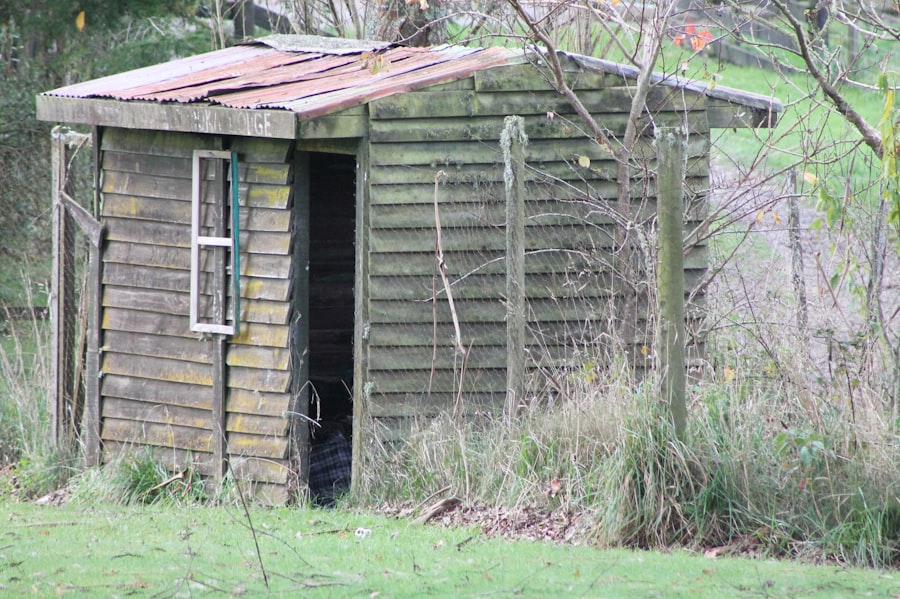
Implementing deterrents is an effective way to discourage hawks from targeting your chickens. Scare tactics and visual distractions can help create an environment that is less appealing to hawks, reducing the likelihood of attacks on your flock. One common scare tactic is using predator decoys such as fake owls or hawks to deter real hawks from entering your property.
These decoys can create the illusion of a larger predator in the area, causing hawks to think twice before attempting an attack. Additionally, consider using reflective objects such as shiny tape or CDs around the chicken coop to create visual distractions that can startle hawks and deter them from approaching. Another effective deterrent is utilizing motion-activated devices that emit sounds or lights when triggered by movement.
These devices can startle hawks and other predators, making them think twice before approaching your property. Additionally, consider using noise deterrents such as wind chimes or bells to create a constant sound that can deter hawks from entering the area. By implementing scare tactics and visual distractions, you can create an environment that is less appealing to hawks, reducing the risk of potential attacks on your chickens.
Utilizing Predator-Proof Netting: Protecting Your Chickens from Aerial Attacks
Predator-proof netting is an essential tool for protecting your chickens from aerial attacks by hawks. This type of netting is designed to create a physical barrier that prevents hawks from reaching your flock. When selecting predator-proof netting, choose a durable and high-quality material that can withstand the sharp talons of hawks.
Ensure that the netting is securely fastened and covers the entire chicken run area to provide maximum protection for your flock. Additionally, consider installing netting over the top of the chicken coop to create a secure enclosure that is inaccessible to hawks. It’s important to regularly inspect the predator-proof netting for any signs of wear or damage, as even small tears or holes can compromise its effectiveness.
Repair any damage promptly to maintain a secure barrier against aerial attacks. Additionally, consider installing additional support structures such as poles or frames to ensure that the netting remains taut and secure. By utilizing predator-proof netting, you can create a safe and secure environment for your chickens, protecting them from potential attacks by hawks and other aerial predators.
Providing Safe Roaming Areas: Designating Hawk-Free Zones for Your Flock
Designating hawk-free zones for your flock is an important aspect of protecting your chickens from potential attacks. By providing safe roaming areas, you can minimize the risk of hawks targeting your chickens while allowing them to enjoy some freedom outside of the coop. Consider creating designated areas within your property that are enclosed with predator-proof netting or fencing to provide a secure space for your flock to roam freely.
These areas should be well-protected and inaccessible to hawks, allowing your chickens to forage and explore without the threat of aerial attacks. Additionally, consider providing natural shelters such as dense shrubs or bushes within the designated roaming areas to give your chickens places to hide and seek refuge if a hawk is spotted nearby. By creating hawk-free zones within your property, you can provide a safe environment for your flock to roam while minimizing the risk of potential attacks by hawks.
Establishing a Hawk Watch: Monitoring and Responding to Potential Threats
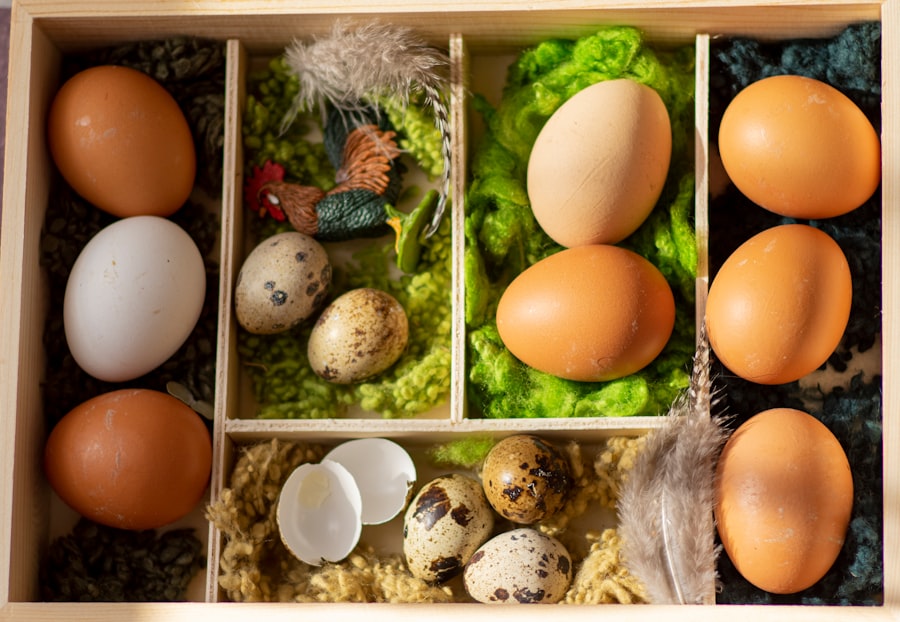
Monitoring for Hawk Presence
Regularly observing the skies and surrounding areas is crucial for detecting potential threats to your flock. Look out for signs of hawk presence, such as circling or diving behavior, to stay ahead of potential attacks.
Setting Up Observation Points
Designate observation points with clear views of the sky and surrounding areas where hawks may be present. This will enable you to monitor for hawk activity and respond quickly to potential threats.
Responding to Hawk Sightings
Having a plan in place for responding to hawk sightings is vital. If a hawk is spotted near your property, gather your flock into the secure chicken coop or designated hawk-free zones to keep them safe. Consider using noise deterrents or scare tactics to discourage hawks from approaching, and keep a close eye on your flock until the threat has passed.
Seeking Professional Help: Consulting with Wildlife Experts for Additional Support
If you’re facing persistent issues with hawk attacks on your chicken flock, seeking professional help from wildlife experts can provide additional support and guidance in protecting your chickens. Wildlife experts have specialized knowledge and experience in dealing with predatory birds such as hawks and can offer valuable insights into effective deterrents and protective measures. They can assess your property and provide recommendations for creating a safe environment for your flock while minimizing the risk of hawk attacks.
Additionally, wildlife experts can provide guidance on legal and ethical considerations when dealing with predatory birds such as hawks. They can offer advice on humane deterrents and protective measures that comply with local regulations and wildlife conservation efforts. By consulting with wildlife experts, you can gain valuable expertise in safeguarding your chickens from potential attacks by hawks while promoting coexistence with these majestic birds of prey.
In conclusion, protecting your chickens from hawk attacks requires a combination of understanding the threat, implementing deterrents, utilizing protective measures, providing safe roaming areas, establishing vigilant monitoring practices, and seeking professional help when needed. By taking proactive steps to safeguard your flock from potential aerial predators such as hawks, you can create a safe and secure environment for your chickens to thrive while minimizing the risk of attacks. With careful planning and strategic measures in place, you can effectively protect your chickens from hawk threats and ensure their well-being in your backyard environment.
If you’re looking for ways to keep hawks from eating your chickens, you may also be interested in learning about the Producers Pride Sentinel Chicken Coop. This coop is designed to provide maximum protection for your chickens from predators, including hawks. Check out this article to learn more about this innovative coop design.
FAQs
What are some effective methods for keeping hawks away from chickens?
Some effective methods for keeping hawks away from chickens include using netting or wire mesh to cover the chicken coop, installing scare devices such as reflective tape or predator decoys, and providing overhead cover for the chickens to hide under.
What are some natural deterrents for hawks?
Some natural deterrents for hawks include planting tall trees or shrubs around the chicken coop to provide cover for the chickens, and allowing roosters to roam freely with the hens to help alert them to the presence of hawks.
Are there any legal methods for deterring hawks from preying on chickens?
Yes, there are legal methods for deterring hawks from preying on chickens. These methods include using scare devices, providing overhead cover for the chickens, and using netting or wire mesh to cover the chicken coop.
What should I do if a hawk continues to prey on my chickens despite my efforts to deter it?
If a hawk continues to prey on your chickens despite your efforts to deter it, you can contact your local wildlife authorities for assistance. They may be able to provide additional guidance or help you obtain the necessary permits to legally address the issue.
Meet Walter, the feathered-friend fanatic of Florida! Nestled in the sunshine state, Walter struts through life with his feathered companions, clucking his way to happiness. With a coop that’s fancier than a five-star hotel, he’s the Don Juan of the chicken world. When he’s not teaching his hens to do the cha-cha, you’ll find him in a heated debate with his prized rooster, Sir Clucks-a-Lot. Walter’s poultry passion is no yolk; he’s the sunny-side-up guy you never knew you needed in your flock of friends!

